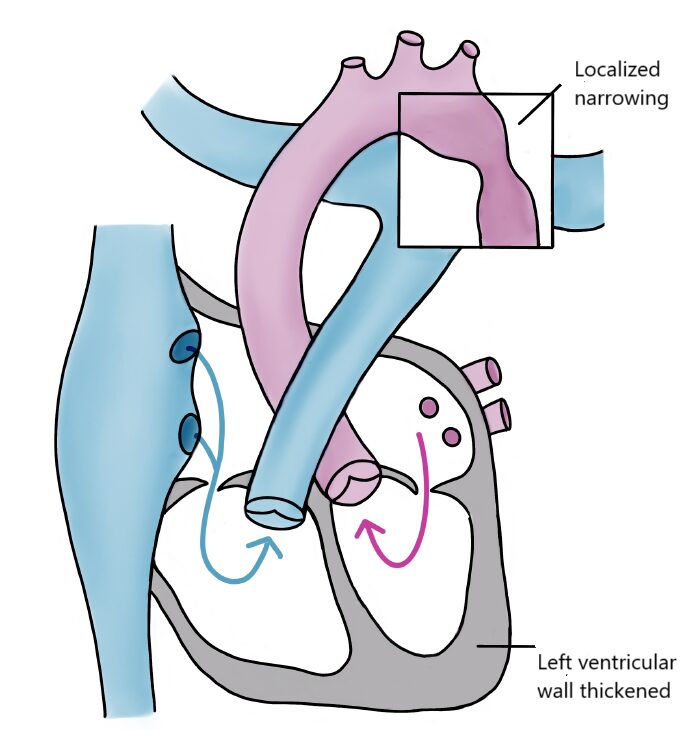Coarctation of the Aorta, COA
Coarctation is a localized narrowing of the large artery, the aorta (Coarctatio Aortae), at the junction between its arch and descending part. This increases blood pressure in the head and arms and lowers blood pressure in the lower body. The left ventricle pumps blood against high pressure, leading to an increase in its muscle mass. During exertion, the blood pressure in the upper body rises more than usual. In children, coarctation of the aorta is, alongside kidney disease, the most common cause of elevated blood pressure. High blood pressure in children almost always indicates another underlying condition that needs to be treated.
Patients with coarctation are often asymptomatic, but occasionally, there may be fatigue in the lower limbs during exertion or headaches. Symptoms are more common if the narrowing is severe or if there are additional heart defects. In such cases, it can lead to severe heart failure within a few days or weeks of birth.
Coarctations that interfere with heart function are corrected. In children under six months of age, coarctation of the aorta is repaired surgically, while in older children, the defect can often be corrected with balloon angioplasty during cardiac catheterization. During corrective surgery, the surgeon removes the narrow section of the aorta and then sutures the ends of the aorta together (“resection and end-to-end anastomosis”). After correction, the repaired area may narrow again as the child grows. In such cases, balloon angioplasty can be performed to address the narrowing. Without correction, the elevated blood pressure can lead to heart failure or cerebral hemorrhage. Patients require lifelong blood pressure monitoring.
